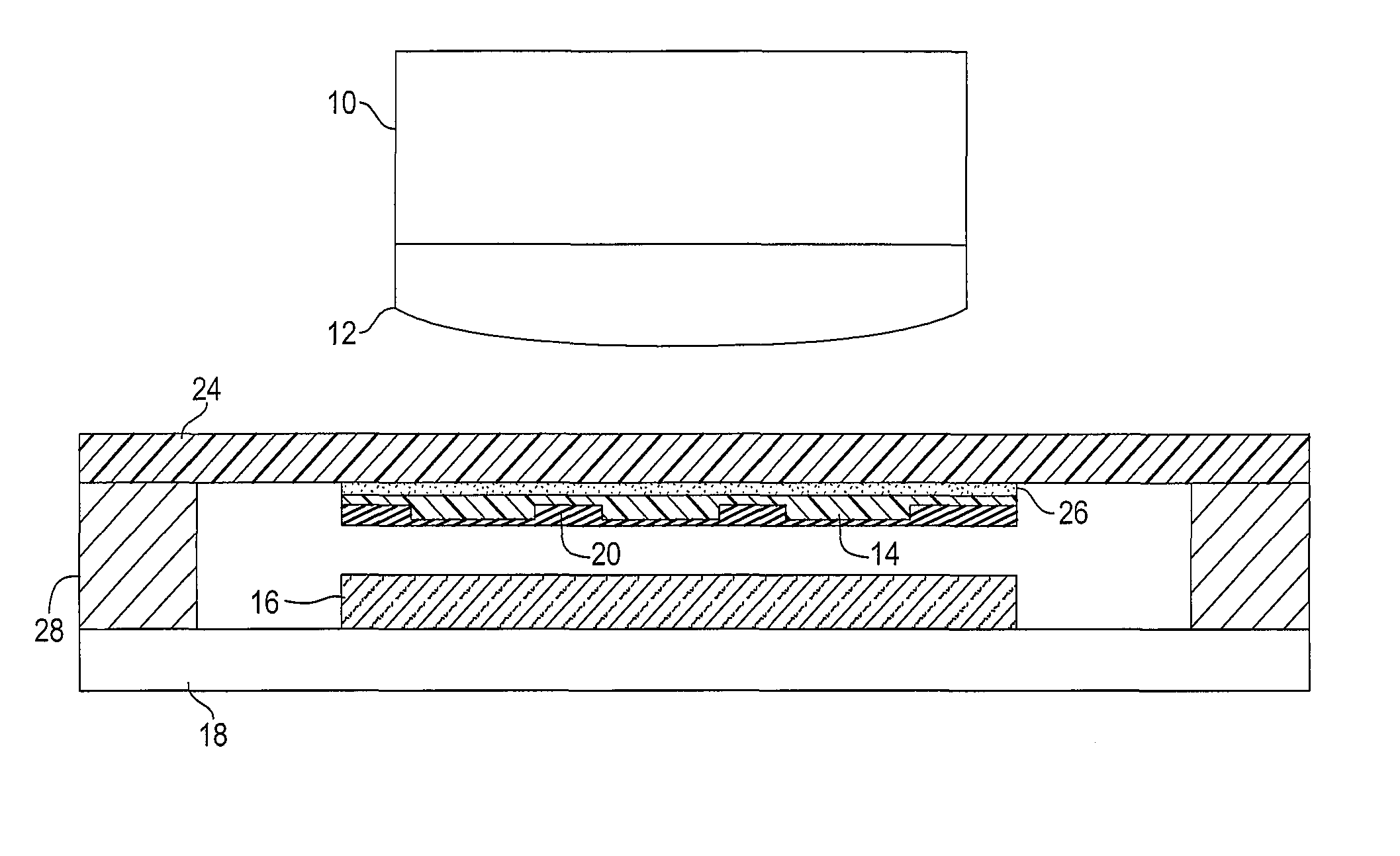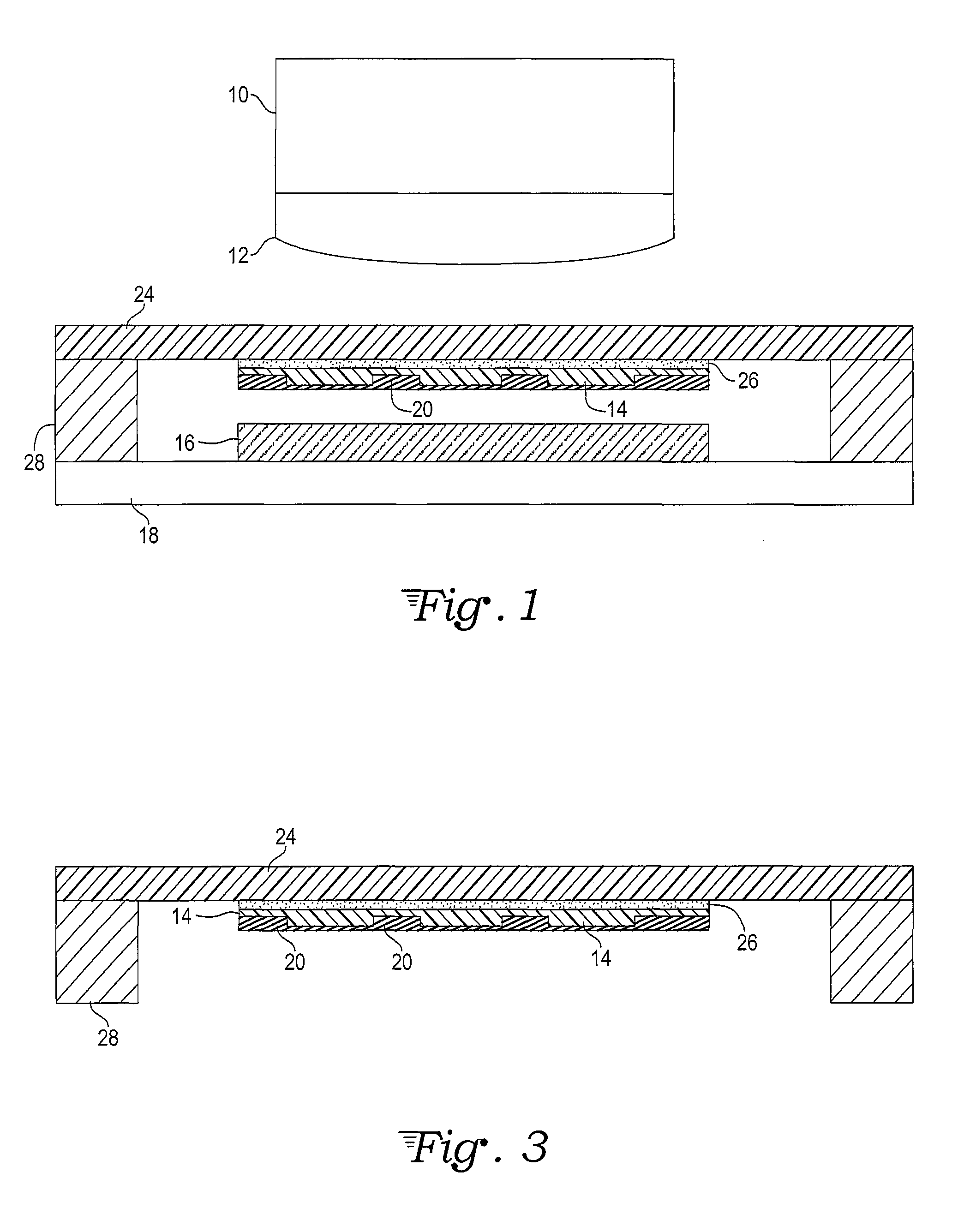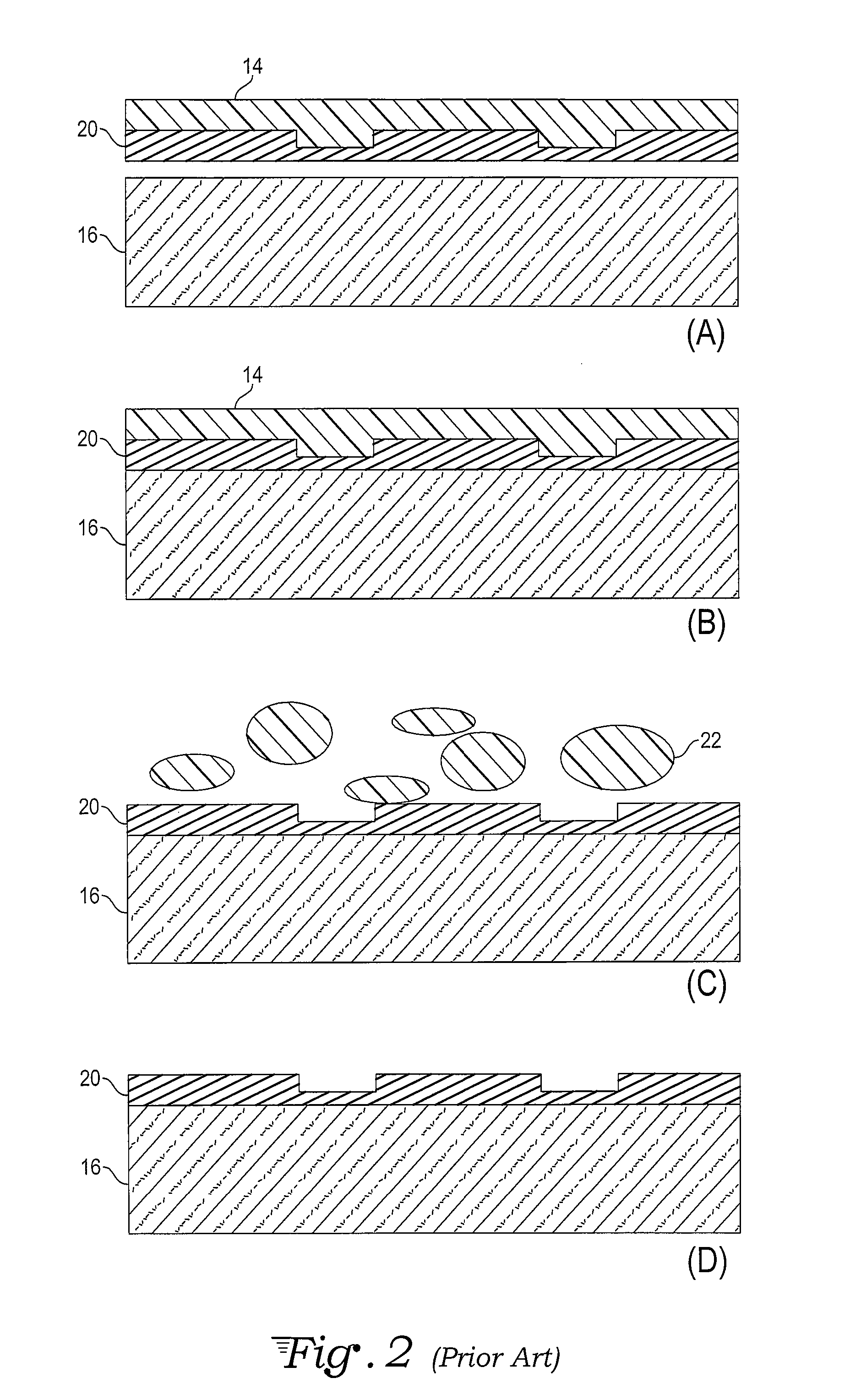Molecular transfer lithography apparatus and method for transferring patterned materials to a substrate
a lithography apparatus and substrate technology, applied in the direction of photomechanical equipment, printers, instruments, etc., can solve the problems of contaminating the master, lowering the throughput of the approach to nanoimprint lithography, and defects and lowering the yield generated by the separation of the master from the polymer film
- Summary
- Abstract
- Description
- Claims
- Application Information
AI Technical Summary
Benefits of technology
Problems solved by technology
Method used
Image
Examples
Embodiment Construction
[0018]Disclosed herein are a system and method for conducing molecular transfer lithography processes in which functional materials deposited on the surface of a destroyable template are adhered to the surface of a substrate. The system that presses a nanopatterned dissolvable template coated with functional materials onto a substrate consists of a pressurized cylinder, a polymer pad, a holder for the dissolvable template to suspend the template above the substrate, and a temperature plate to support the substrate. The method involves pressurizing the cylinder to push the pad onto the back of the polymer dissolvable template to drive the functionalized material onto the surface of the substrate, which undergoes an adhesion process that after retracting the cylinder and pad enables the functionalized material to remain on the surface of the substrate. Afterwards the substrate with the template and holder assembly is subjected to a water bath, which dissolves the template and leaves t...
PUM
| Property | Measurement | Unit |
|---|---|---|
| temperature | aaaaa | aaaaa |
| temperature | aaaaa | aaaaa |
| temperature | aaaaa | aaaaa |
Abstract
Description
Claims
Application Information
 Login to View More
Login to View More - R&D
- Intellectual Property
- Life Sciences
- Materials
- Tech Scout
- Unparalleled Data Quality
- Higher Quality Content
- 60% Fewer Hallucinations
Browse by: Latest US Patents, China's latest patents, Technical Efficacy Thesaurus, Application Domain, Technology Topic, Popular Technical Reports.
© 2025 PatSnap. All rights reserved.Legal|Privacy policy|Modern Slavery Act Transparency Statement|Sitemap|About US| Contact US: help@patsnap.com



